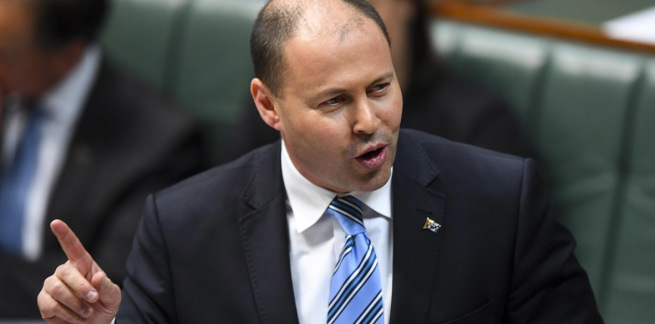Speaking to journalists during a press conference at Parliament House last week, Treasurer Josh Frydenberg reflected on the topic of housing affordability.
“It is a very important issue. A lot of people are challenged by the higher house prices. I have been concerned about the heat in the housing market,” he said.
“That’s why when I met with the Council of Financial Regulators, I was very supportive of what APRA did in increasing the serviceability buffer from 2.5 to 3 per cent.”
APRA has signalled that it is considering further steps following the buffer raise, with its recently released framework showing it has explored limits on new loans with high debt-to-income ratios and further serviceability buffer changes.
Last week, the regulator released a new capital framework for the banks, to come into effect from 2023, which will require the banks to hold more capital against riskier mortgages, namely investor and interest-only loans.
New data from the Australian Bureau of Statistics had also showed new housing loans to investors hit its highest level in six years in October, rising by 1.1 per cent during the month to $9.7 billion worth. Mr Frydenberg acknowledged the shift, but stated there had still been the highest levels of first home buyers in the last 13 years.
Speaking on APRA’s serviceability intervention, he commented: “Maybe it’s not the last thing they’ll do, I don’t know.
“But this will be a discussion that I will continue to have with our prudential regulator APRA, with Phil Lowe as the governor of the Reserve Bank, in my discussions with them, because I do want to ensure we continue to get Australians into a home.”
He also pointed to the issue of supply, noting the government’s home-ownership grants such as HomeBuilder, the First Home Super Saver Scheme and the Loan Guarantee Scheme.
According to the Treasurer, the government’s programs have helped 320,000-odd Australians into home ownership in the last three years.
“So there’s work that’s going on as to how we can increase supply but that is really mostly in the bailiwick of the states because they have planning and zoning and land release and the like,” Mr Frydenberg said.
However, local councils have pointed to planning processes hindering property development at both state and federal levels of government.
A Queensland regional council told the ongoing parliamentary inquiry into housing affordability that planning and regulatory processes around developments can drag out the time from zoning approvals to completed housing by up to 12 years.
Mr Frydenberg previously told Momentum Media that housing would be a key issue ahead of the upcoming federal election, despite the opposition abandoning its prior policy reforms against negative gearing and capital gains tax.
Meanwhile, analysts have predicted house prices will slow their upwards trajectory in 2022, after achieving around 22 per cent price growth in 2021.
SQM Research has forecast that further action from APRA before June next year would dampen prices further.
Its price forecast has also somewhat echoed three of the big four banks – conveying that the price rise will slow before dipping in 2023.
ANZ has tipped there will be a national price fall of 4 per cent in 2023, to follow a 6 per cent rise in 2022 and a 21 per cent surge in 2021.
CBA modelling has pointed to a 10 per cent fall in 2023, to coincide with a cash rate rise to 1.25 per cent – after a 7 per cent rise in 2022 and 22 per cent growth in 2021.
Meanwhile, Westpac has projected price growth will moderate from 22 per cent in 2021, to 8 per cent in 2022, before a 5 per cent correction in 2023.
[Related: Mortgage industry poll launches ahead of federal election]
 ;
;

Comments (0)